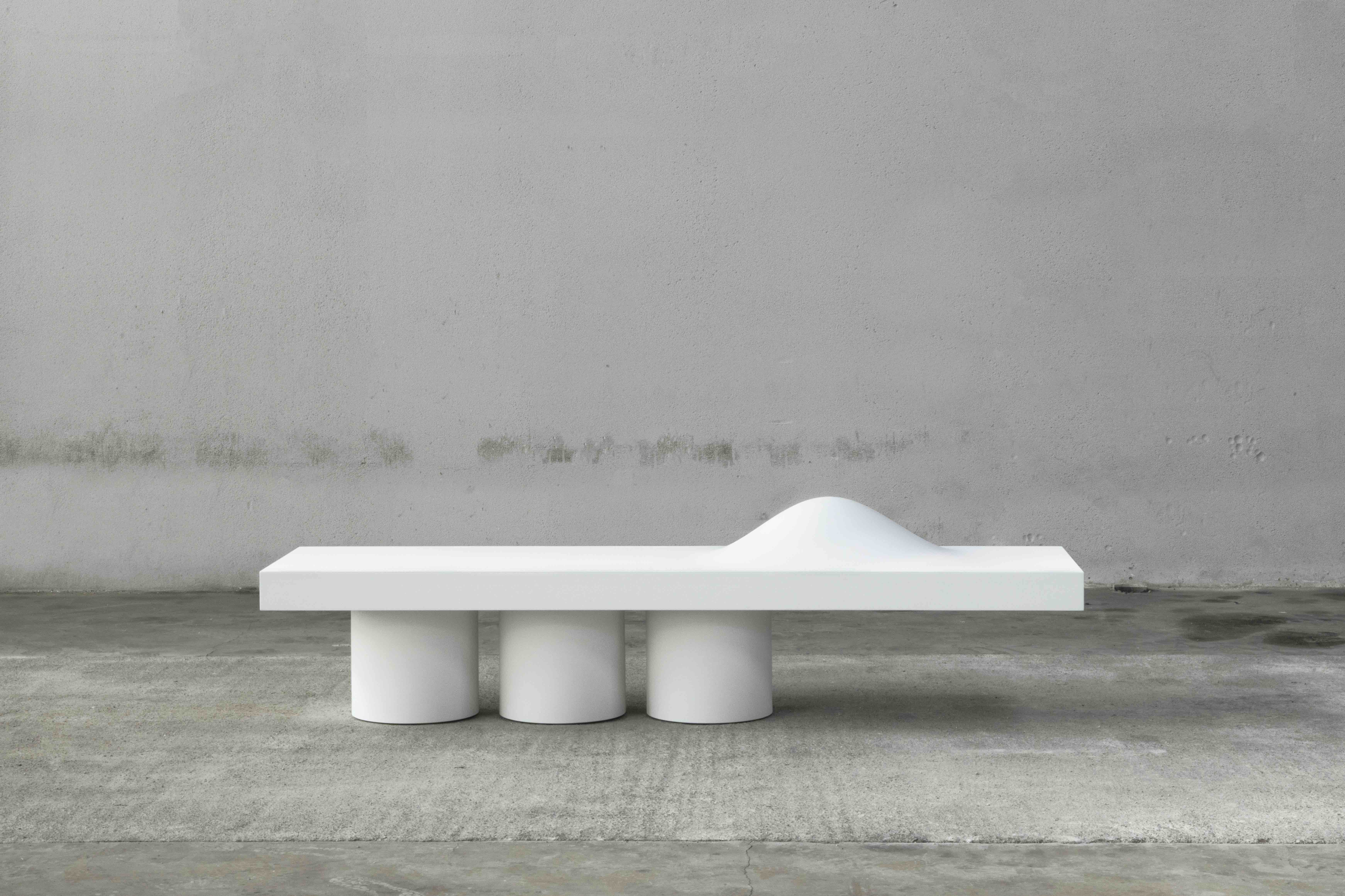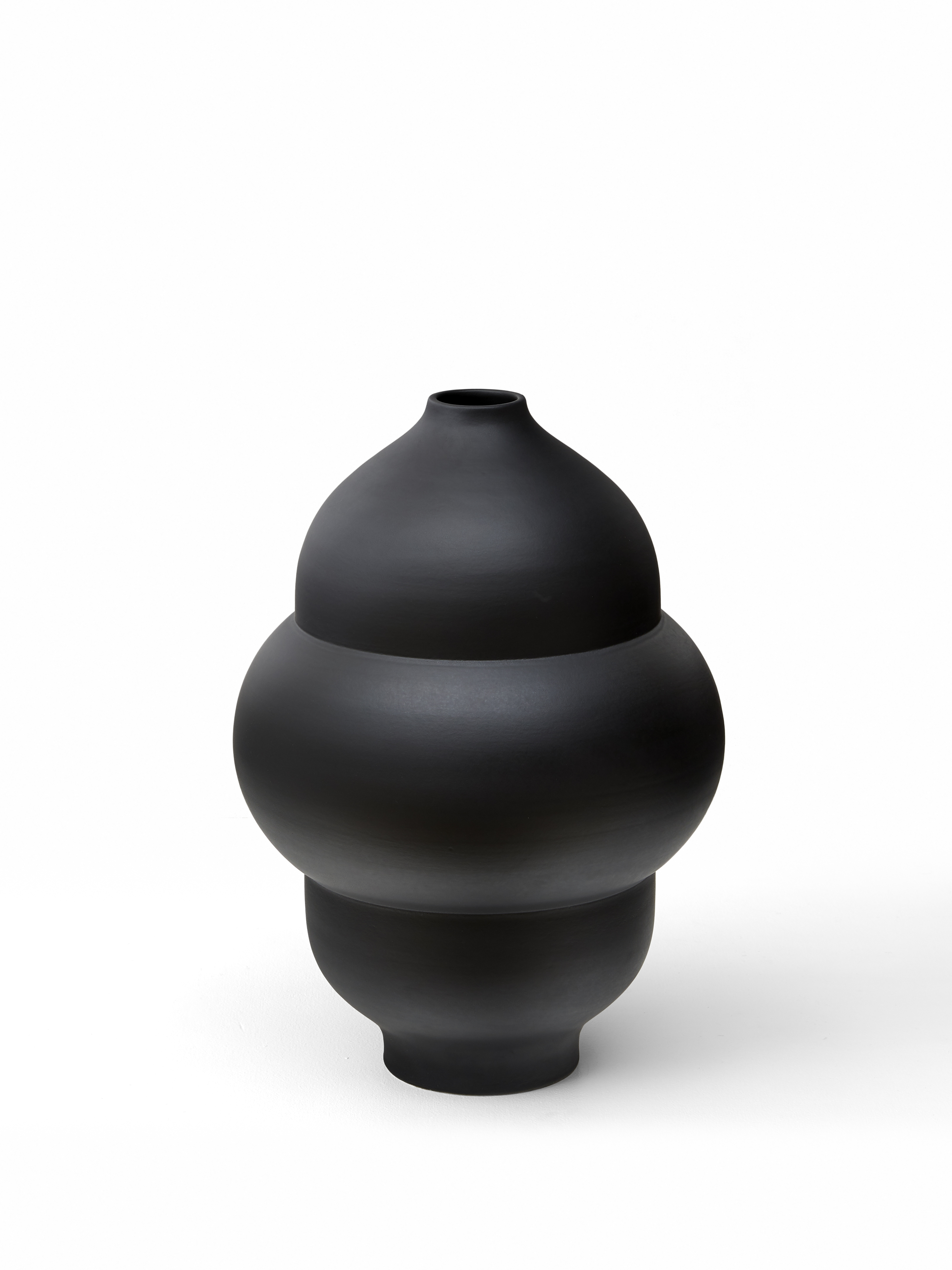Stretch Goals
Nothing in design is easy, but it takes a special kind of rigor to make a “soft” form feel perfect. The works here show how it’s done. Not coincidentally, all are soft only in their lines. They are made of hard materials that can hold a shape taut: ceramic and concrete. Actually, it’s even a little more complicated than that, because these materials are worked in a fluid or plastic state, only hardening when fired or cured. This opposition between the pliant and the rigid, and the possibility of alchemical transformation between them, is right at the heart of Najla El Zein’s Distortion series. It is an object that looks like an event: a rectangular bench that appears to have inexplicably welled up in one spot. This could be seen simply as an image of pregnancy, but the particular contours that El Zein has imparted to it discourage such a narrow reading; better to think of it as an ambiguous allegory of change and emergence.
Pierre Charpin’s shapely Plump 4 Vase is equally multivalent. Ceramic vessels, so closely intertwined with the care and sustenance of humankind, have always been freighted with figural analogy — not for nothing do we speak of “clay bodies,” and of a pot’s foot, belly, and lips. Those associations certainly register here, but it is important to note that this curvaceous form was first presented in Charpin’s exhibition Similitude(s), which was principally devoted to more austere geometric forms. In that context, the more exacting qualities of the Plump vases were foregrounded: their perfectly circular cross-sections, their echoes between neck and base, and the pneumatically firm transitions from one section of their form to the next.
Something similar can be said for Rick Owens’ Soft Stool, which, as its name implies, features a horizontal form draped like fabric between its two uprights. (This concrete version is a development from an earlier design in carved marble.) Again, though, there is nothing slack about the object; it is possessed of a massive monumentality, which recalls the thrones of ancient Mediterranean cultures.
DNA is a collaborative essay project, intertwining three gallery programs into a single, generative presentation.





